We’re on our grand finale day, and the two islands we visit today are excellent windups to our tour.
First up is Plazas Sur, a small island off Santa Cruz. This is one of those places where you can spend all day. As you step off the dock—assuming the sea lions let you—you’ll usually find land iguanas just to the right of the trail, in the trail, and all along the both trails (to the left and up the hill). I almost immediately noted to the naturalist that it seemed like the population had exploded from the last time I was here, and the response was “the park service is considering moving some of iguanas across the channel to Plazas Norte.
The interesting thing about Plazas Sur is that the primary feed for the iguanas is the cacti, but the only cacti here generally don’t reach to the ground. Thus, there’s high competition for food, since the lizards can only reach their primary food by reaching up high (standing on something) or waiting for it to fall off. This also meant the iguanas tended to be aggressive, plus there also seemed to be a lot of mating going on.
And we saw examples of that almost immediately upon getting off the Zodiac:
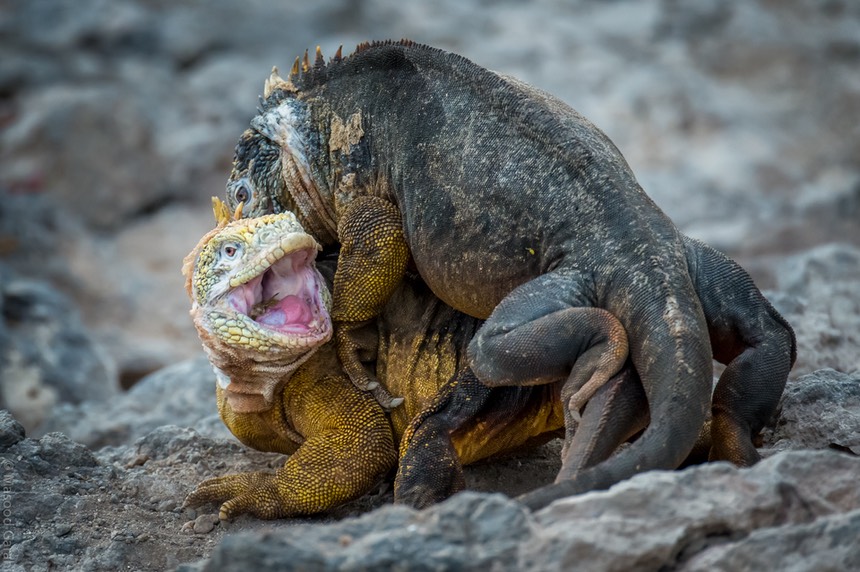
But the other thing about Sur is that the terrain is great for lizard portraits shots:

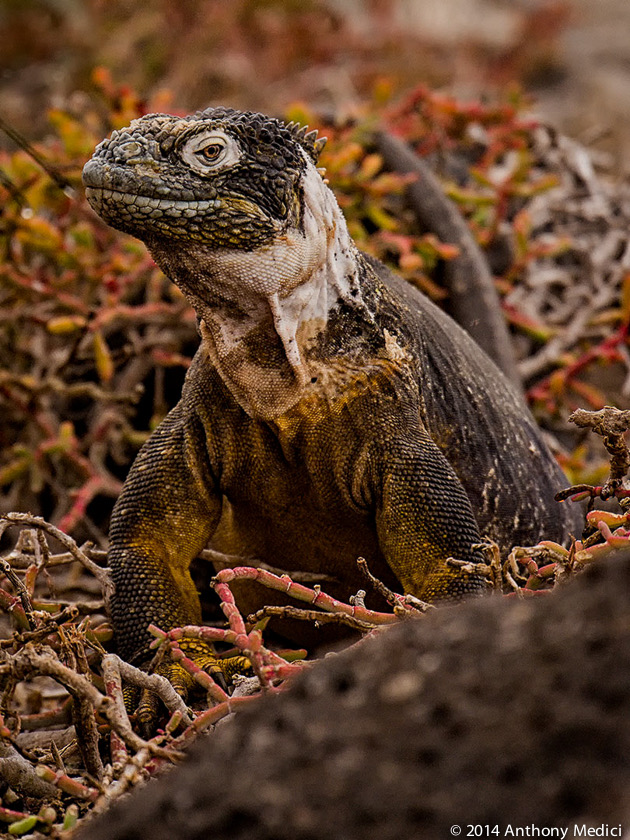

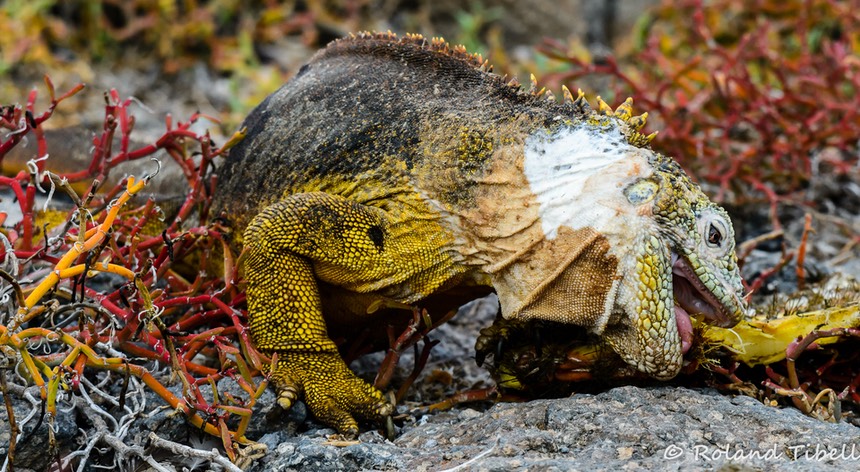
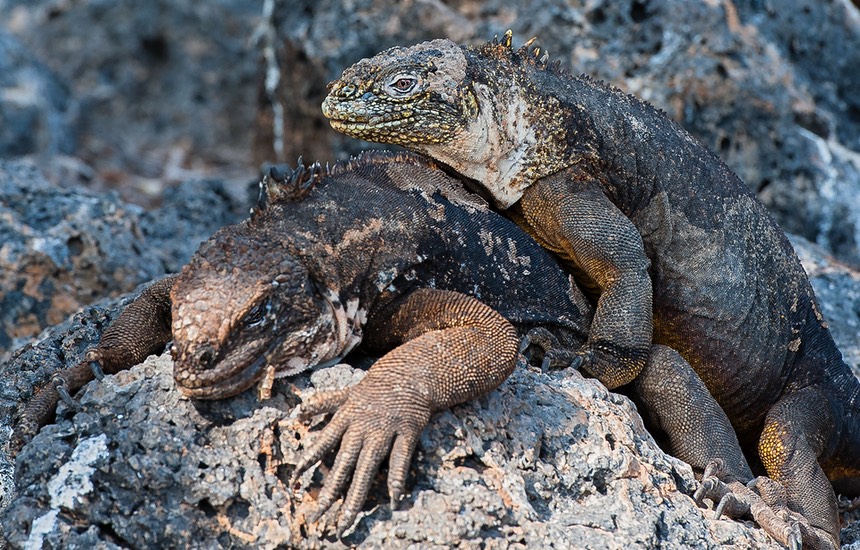
One thing to look for when you have such a target rich environment is whether or not you can tell a little story. It doesn’t have to be a big story, just a sequence of shots that tell what happened. This fellow (and yes, he’s a male, probably even an alpha male), for instance, came running over to find a cactus pad on the ground that for some reason wasn’t occupied. He started chowing down. When a female came over, he shared with her. But when another male came along, he chased that poor guy off. Then he came back and mated with the female (I won’t show that image):
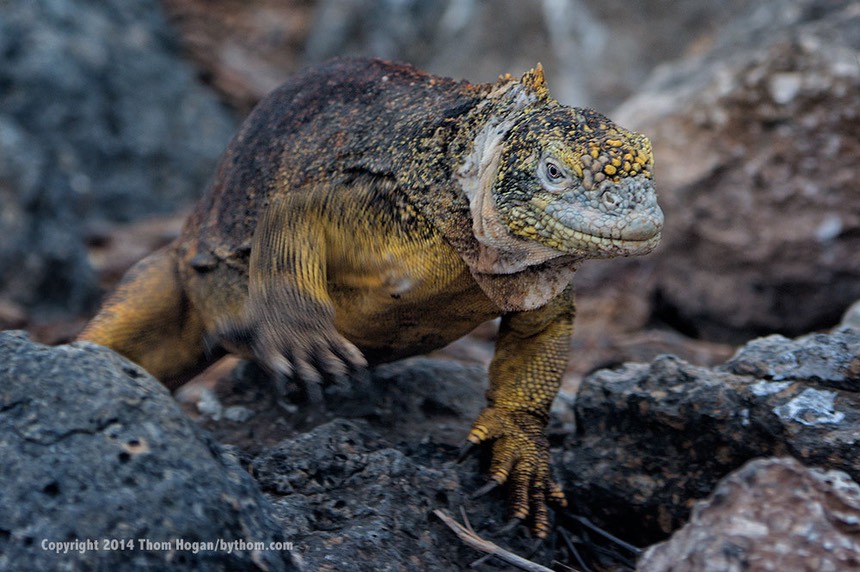
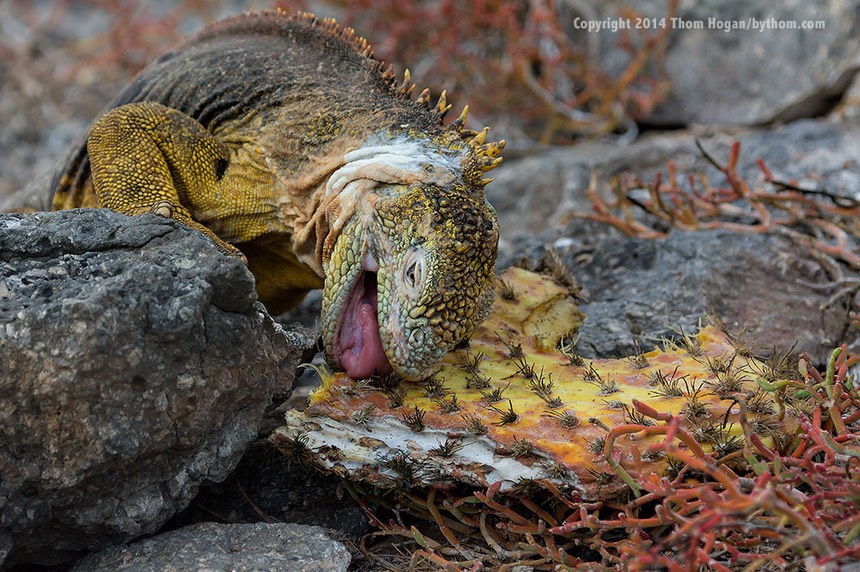
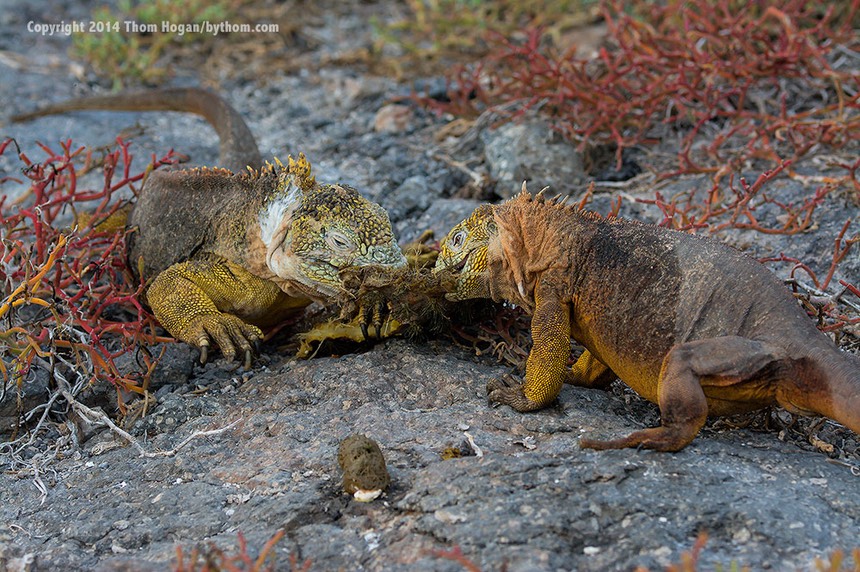
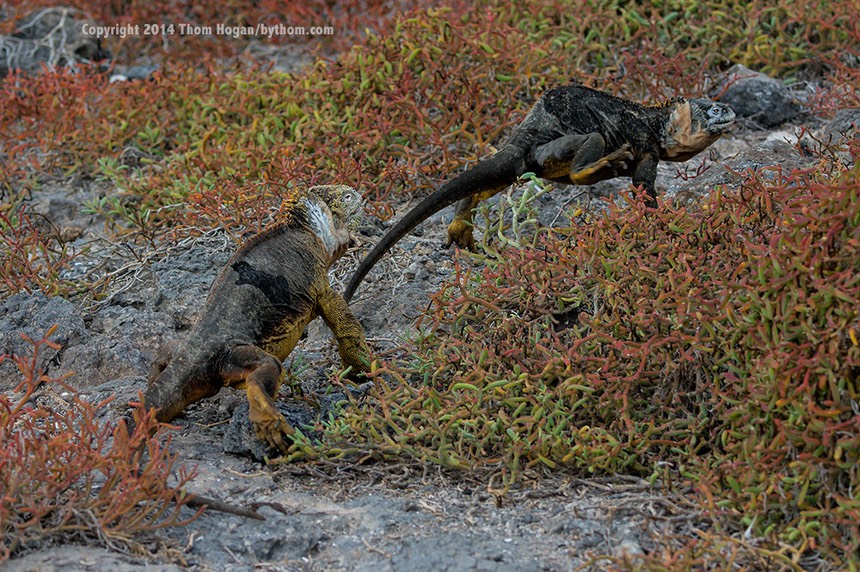
Not a big story. But note that because I was thinking “story” I was trying to frame up my shots as something more than lizard head. I had plenty of lens to do that, so the sequence could have lizard head, lizard head eating, lizard heads eating, lizard head hissing, lizard heads mating. Unfortunately, I was stuck in an area where the marked path was narrow, otherwise I would have done more to change angles, too. Still, I was looking for ways to make each shot different and tell a new part of the story.
Once past the lizards—which took some of us quite a long, long time, time measured in hours—you arrive at the top of the rise on the island to find a seaside cliff that the birds love flying along:
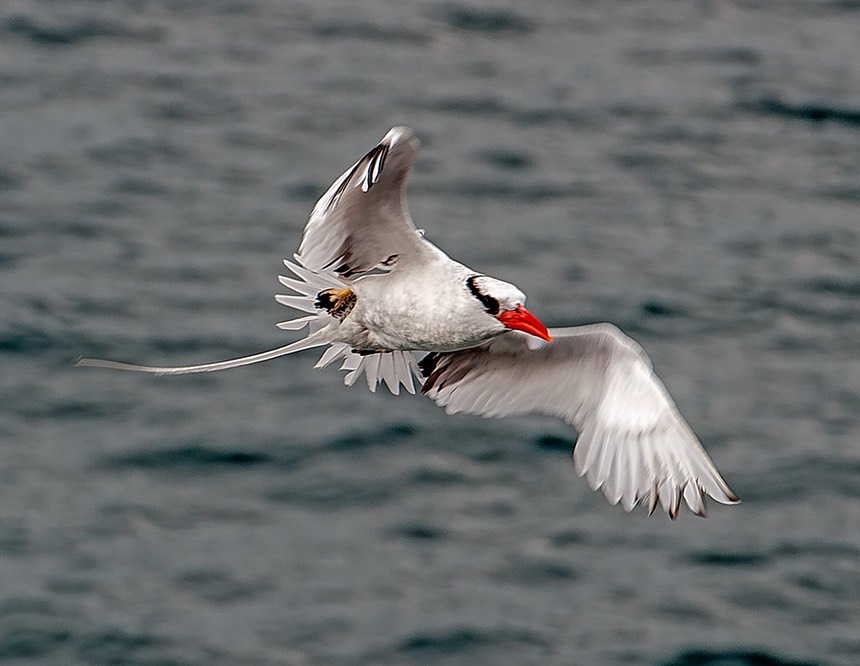
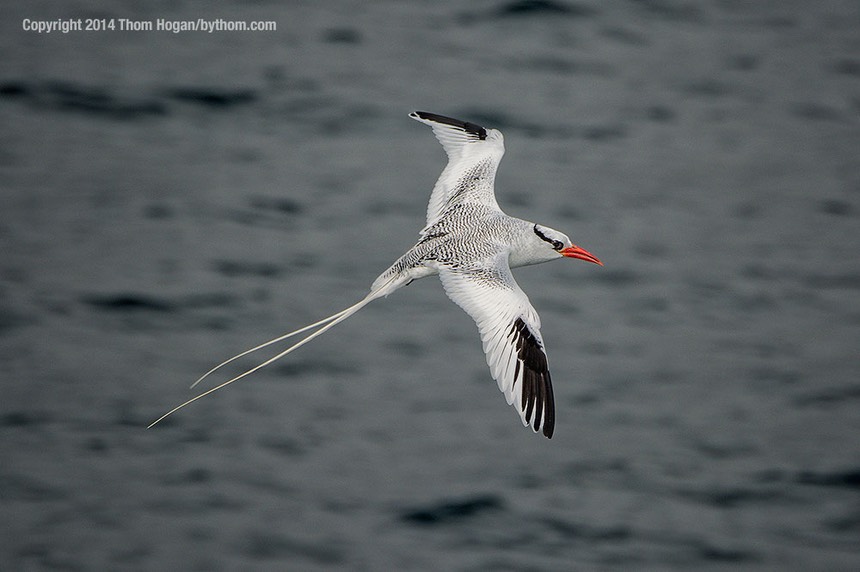
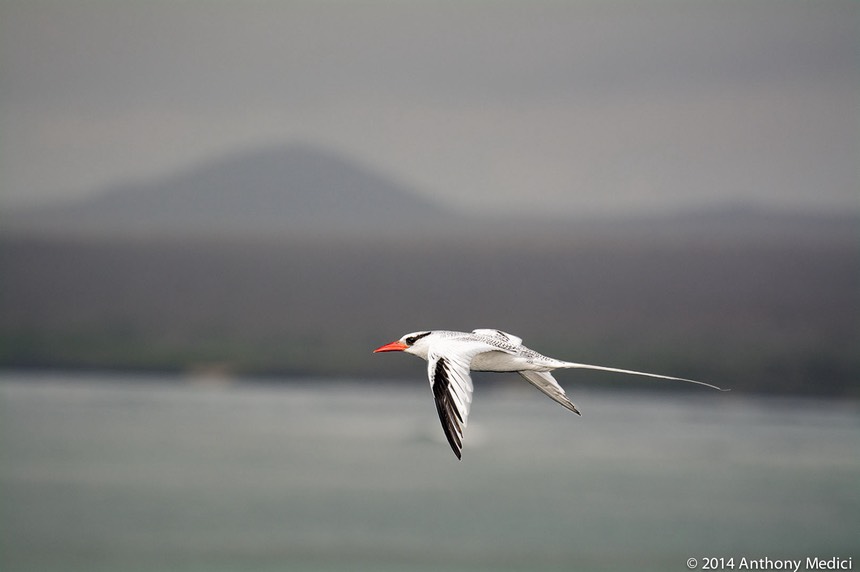
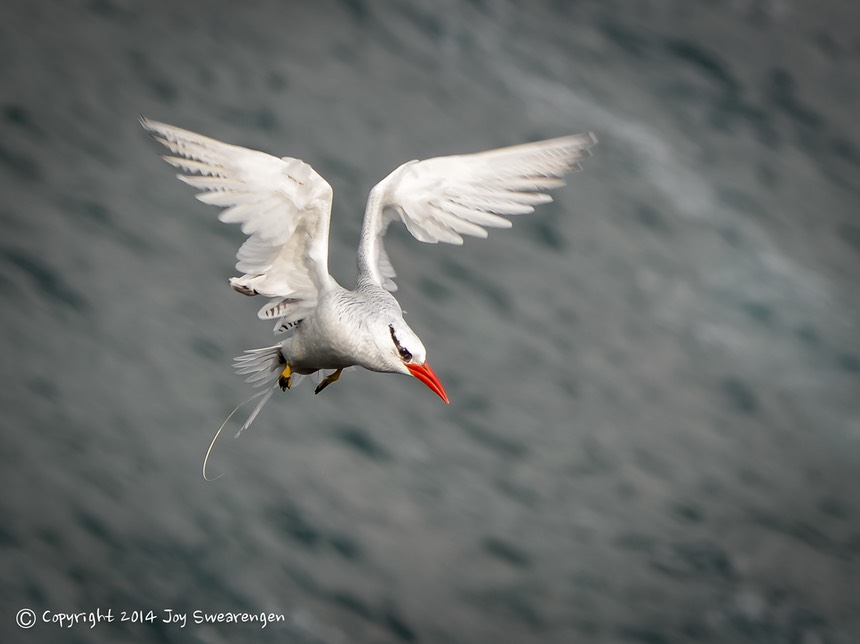
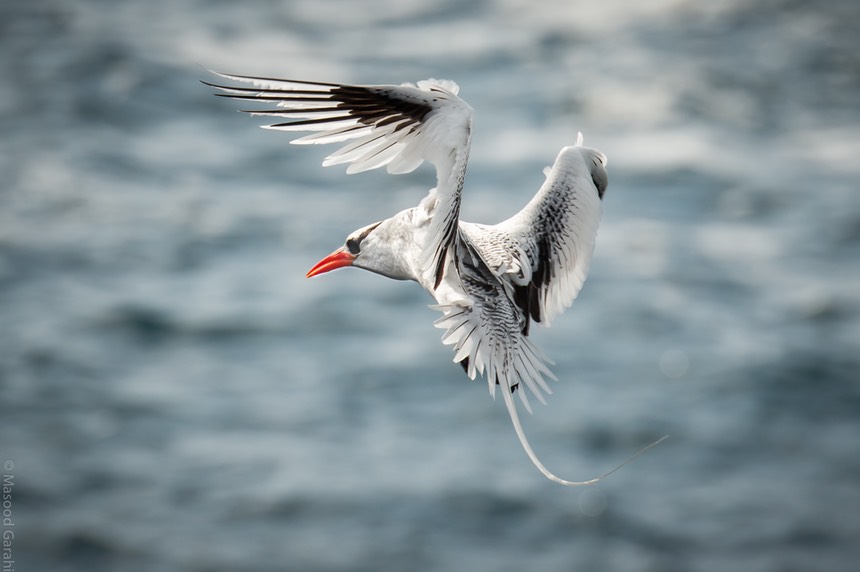


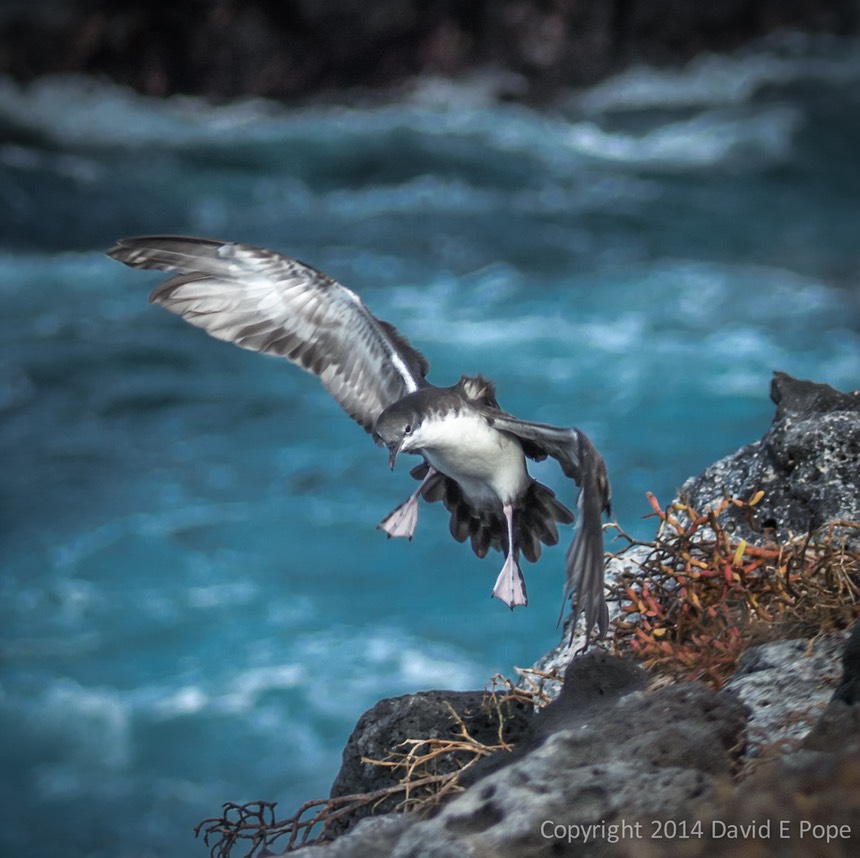
Yeah, it was crazy. For hours. I’m doing a huge amount of pruning of the good images I was sent by students here. It seems that everyone was filling buffers and cards and getting their birds in flight fill.
After lunch we moved to Seymour Norte. Guess what we find here? You guessed it, more land iguanas, more birds in flight, and a return of our favorite red balloon, the frigate bird. But what most folk got caught up shooting were the Boobie mating dances in good light, so I’ll just show a few of those.
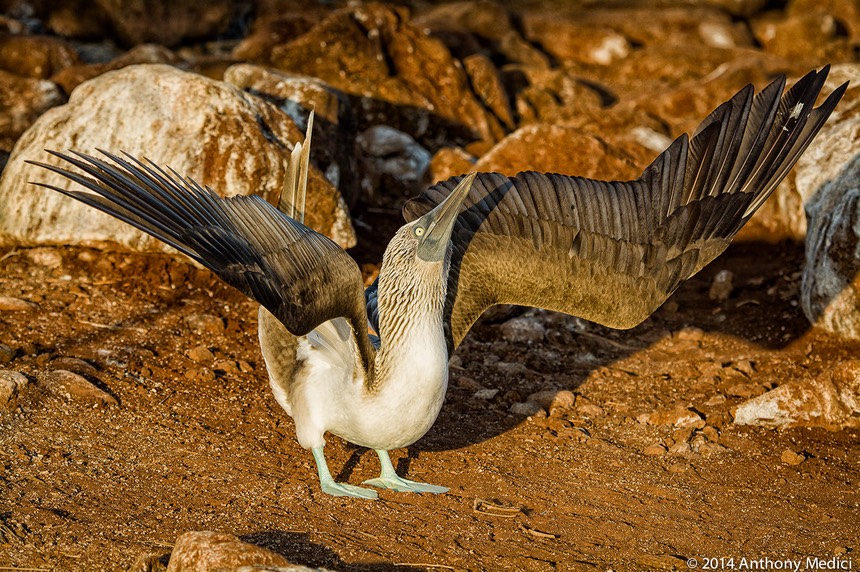
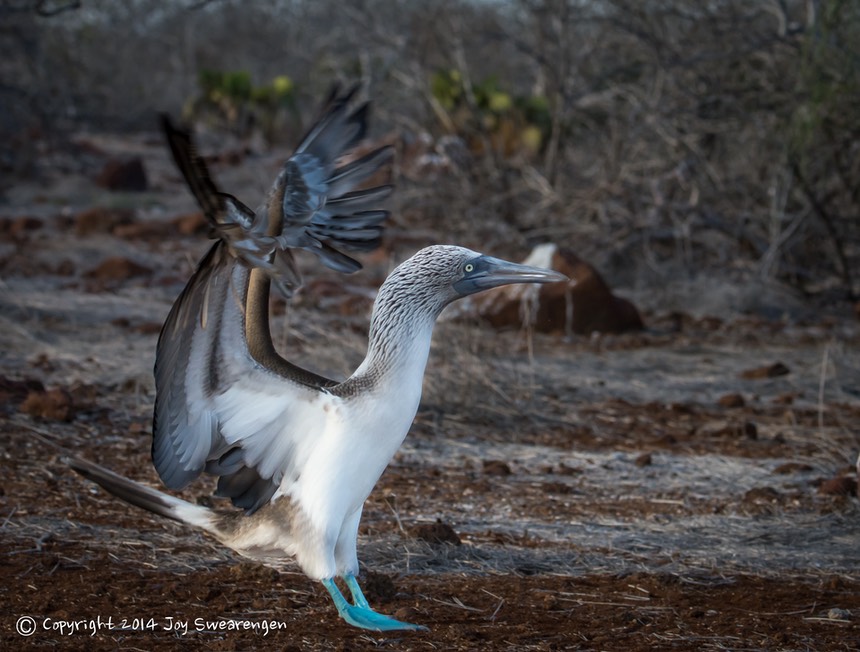
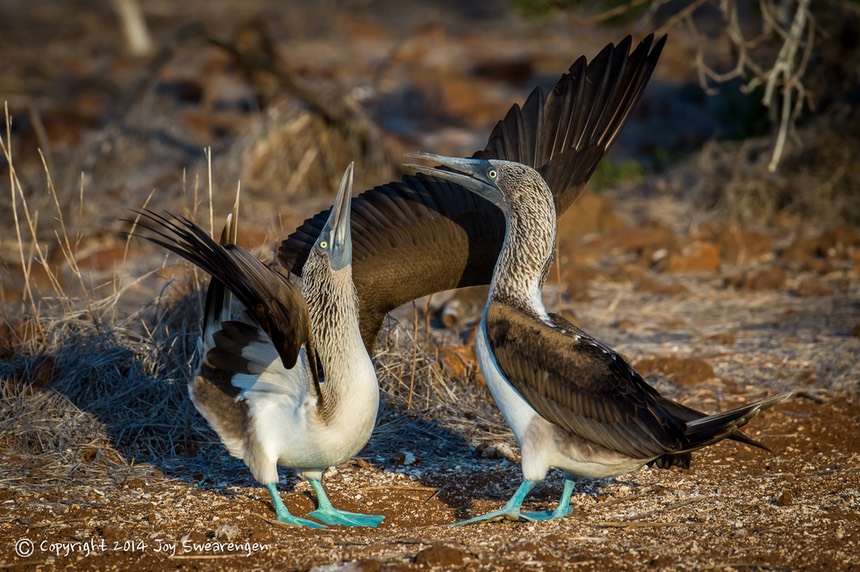
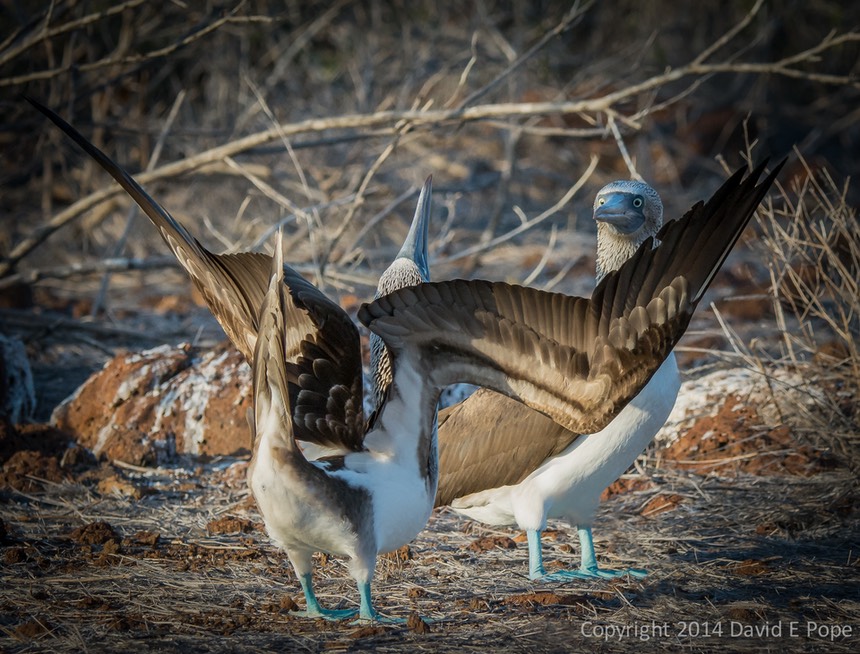
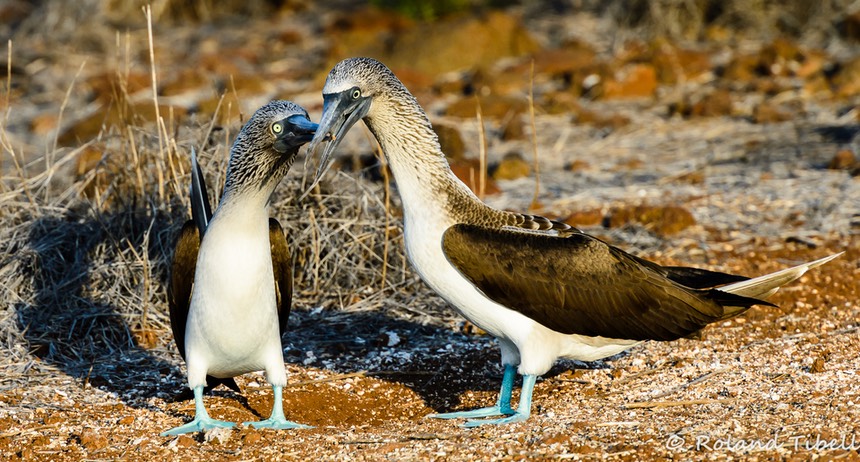
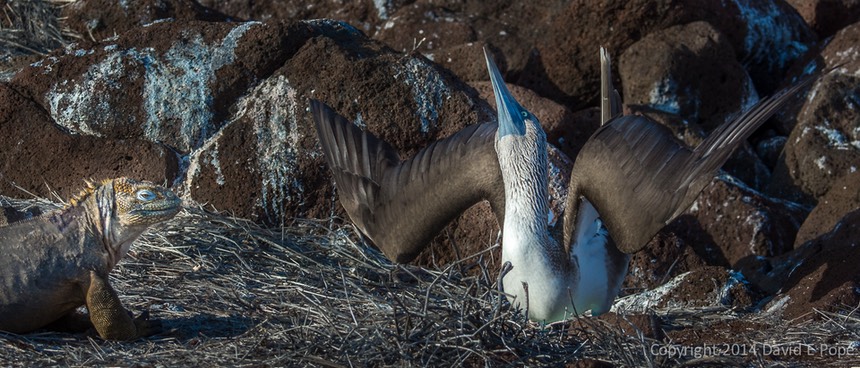
Since this is our last shore visit, I tried to look for fitting “final” images for our trip. Here’s what I came up with:
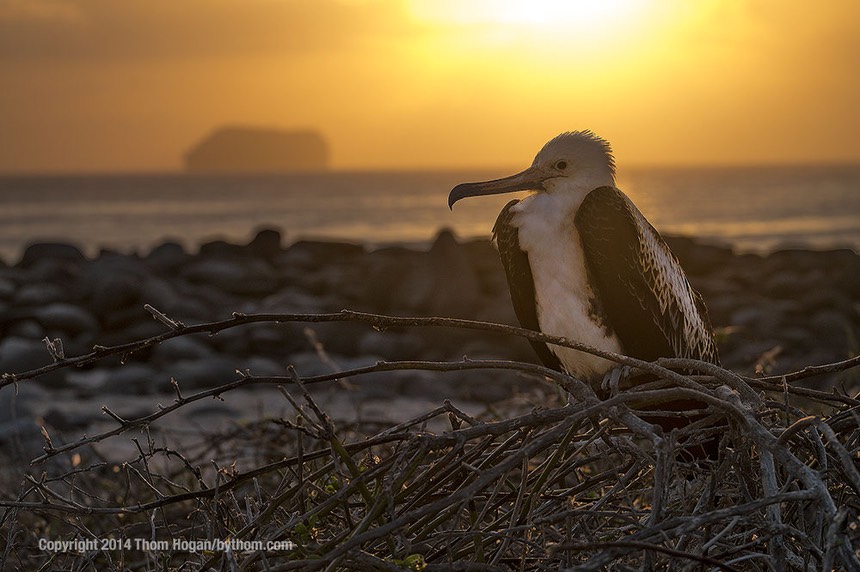
Judging from everyone’s expressions and conversations back at the boat, everyone had a great day today, and felt the workshop ending with another of those Galapagos' big bangs. This was a long day, but one that was shoot, shoot, shoot. From iguanas at sunrise to frigate birds at sunset. I hope the images did it justice for those of you who weren’t there.
Landings: Plazas Sur has a rock dock that’s generally very easy to get off on, though it can be slippery, especially if the sea lions have also been using it; likewise, Seymour Norte also has a rock dock, though it tends to be fairly slippery and waves can come up and make it more slippery.
